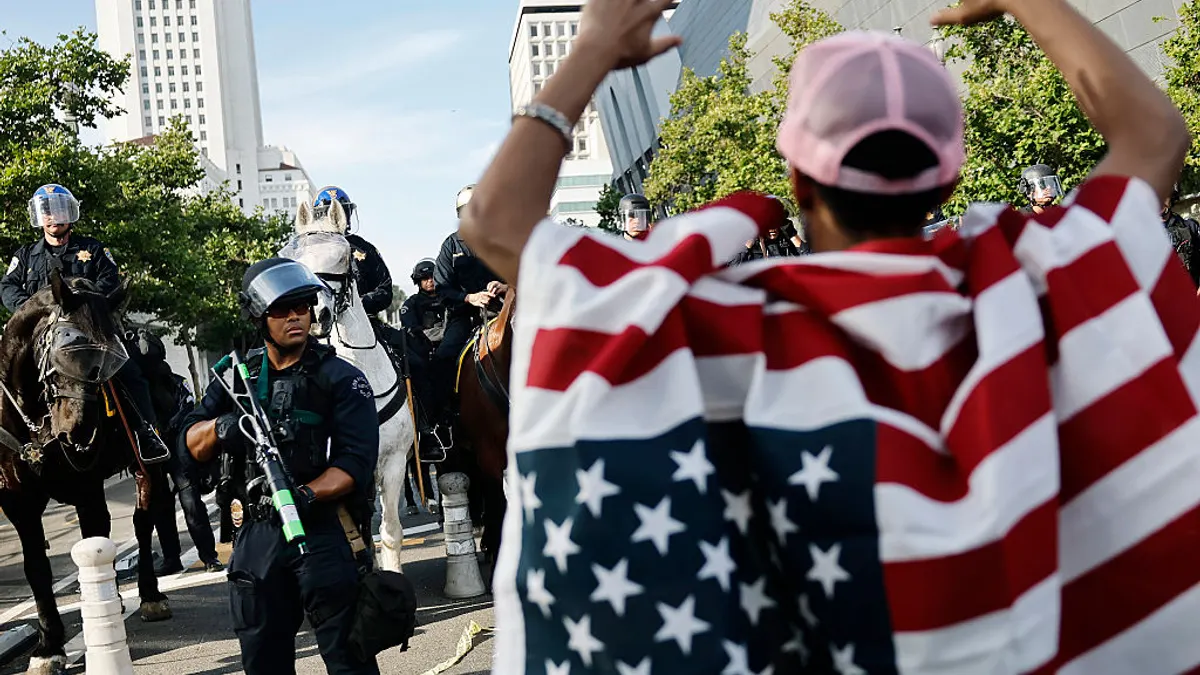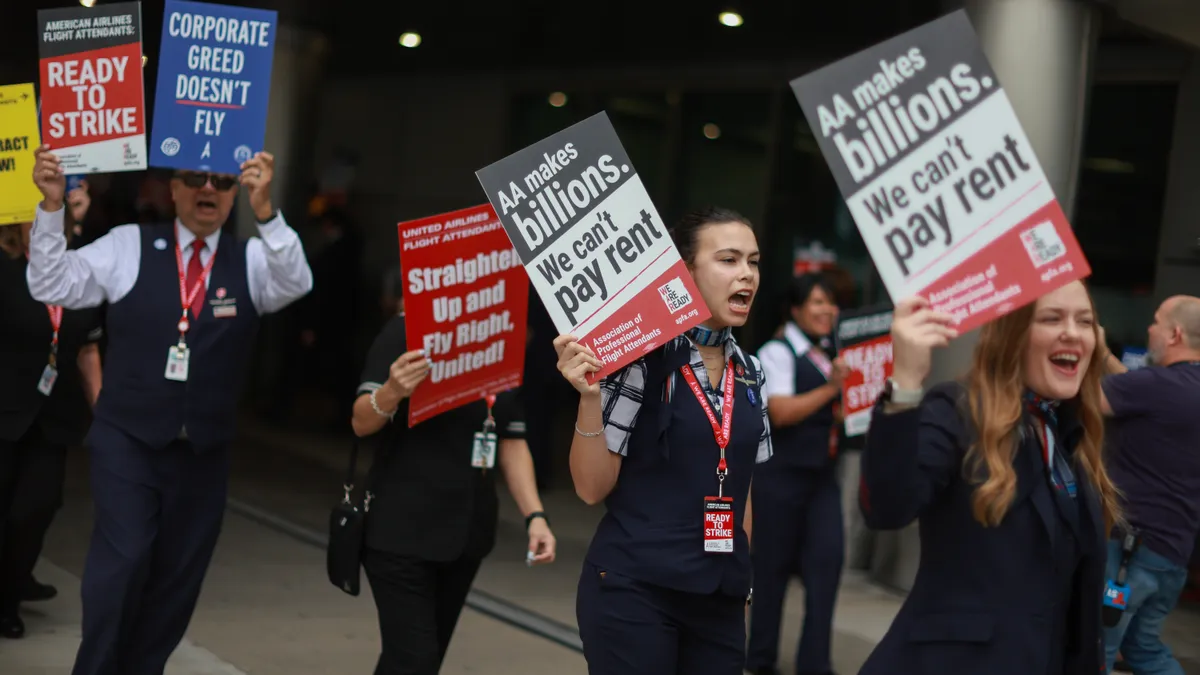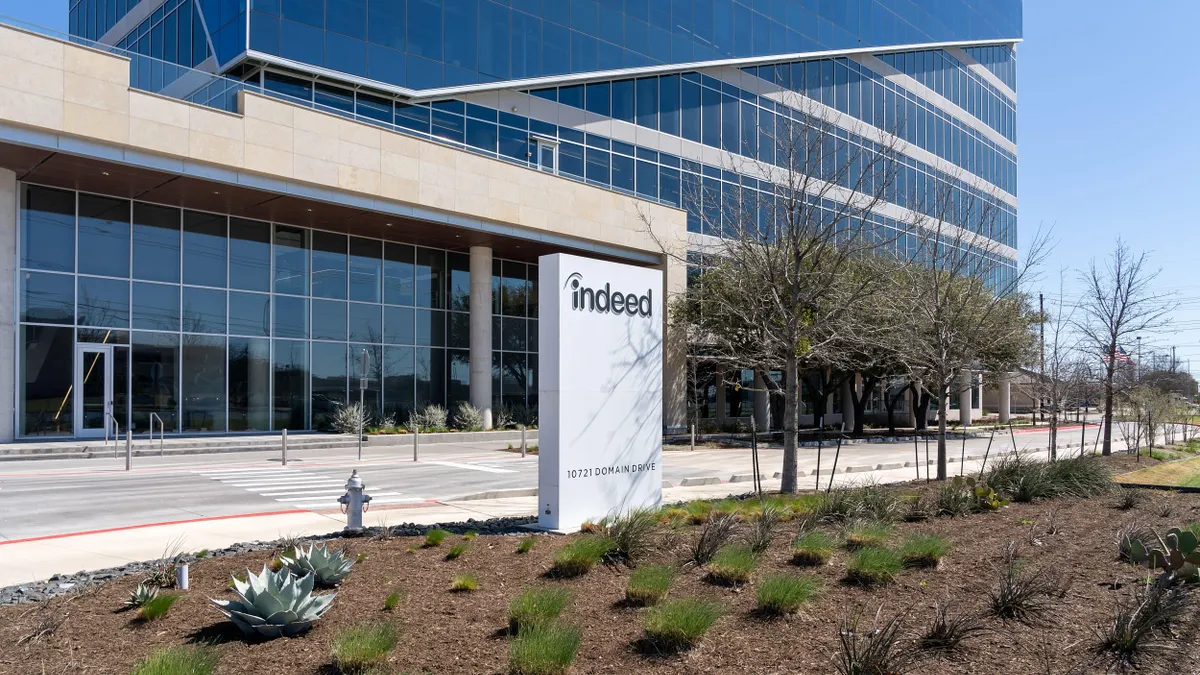Heather Vough is an associate professor of management at George Mason University’s School of Business and a workplace expert. Views are the author's own.
After 18 months and counting of working under the conditions of COVID-19, do you find that your social skills have taken a hit? If so, you're not alone. After so much social distancing, mask-wearing and isolation from colleagues, it's natural to be a little rusty on the interpersonal niceties. As social awkwardness spreads throughout the workforce, managers should be aware of the ensuing challenges — and potential opportunities.
As a management theorist, I study social gaffes, or unintentional breaches of etiquette. We all commit these from time to time. However, socially awkward people are particularly prone because they tend to misread interpersonal cues. A workplace faux pas can range from relatively harmless, like not holding the elevator door for a colleague, to offensive, like asking a woman who isn't pregnant when she's due.
Most social gaffes fall closer to the less egregious end of the spectrum, but that doesn't mean they can be ignored. Even relatively minor gaffes can become what my colleague Kevin Rockmann calls "anchoring events" — decisive moments that change a relationship's trajectory for better or worse. It's not only the gaffe itself that matters, but also how the involved parties mentally process the gaffe. On top of that, one must consider what happens between the two afterward. For example, does the one who committed the gaffe apologize? If so, is the apology sincerely accepted? These factors can amplify the positive or negative impact of social gaffes of all proportions.
My recent paper in the Journal of Organizational Behavior, co-authored by Harshad Puranik of the University of Illinois at Chicago and Chandra Shekhar Pathki of Nazabayev University, paints a picture of how this operates by drawing upon an extensive survey of prior research to map the causes and consequences of social gaffes.
We all know what it feels like to goof up in a social situation. It's not at all pleasant. But how we interpret the gaffe we committed — and its relation to ourselves — will differ from person to person, situation to situation. Broadly, our self-interpretations will be dominated by one of three emotions: embarrassment, guilt or shame. The first two are action-focused. They attribute the gaffe to a specific mistake that either threatens our preferred self-image (in the case of embarrassment) or may hurt others' feelings (guilt). Shame, however, is entirely different. It tells us something is wrong with our fundamental selves, not a discrete action.
My research suggests that the interpretation we choose will determine how we attempt post-gaffe damage control. When we feel embarrassment or guilt, we'll try to repair the damage by apologizing or taking steps to restore our dignity. But shame-driven interpretations lead us to believe the situation is irreparable because it stems from flaws in our deepest self. So instead of reaching out, we withdraw from the colleague we may have offended. If our feelings of shame are especially strong, we may also withdraw in a more general sense, disengaging from the organization as a whole.
The impact of shame is especially worth considering in light of COVID-19. My paper posits that those prone to social gaffes are more apt to adopt shame-based interpretations. When we're aware of committing gaffes repeatedly, we are more likely to find fundamental fault with ourselves. Therefore, socially-distanced employees who come back to work and find themselves making repeated gaffes are at risk of adding to an epidemic of employee disengagement that already costs firms tens of millions annually.
So far, though, we've only looked at one half of the picture — the person who commits the gaffe. What about the victim of their social stumble, like the colleague excluded from the elevator or the woman who may have gained a little weight being asked when she's due? After all, it takes two to repair a relationship once a gaffe has been committed. That's assuming the victim sees the incident as a gaffe, however. They might interpret it otherwise — as a joke that went over their head, for example — or they might not have noticed it at all.
The victim's interpretation of the incident as either a gaffe or not is crucial. A gaffe-perpetrator who feels embarrassed will try to salvage their reputation in the victim's eyes by, for example, flaunting their sensitivity or intelligence. If the victim doesn't understand why this is happening, i.e. if they don't recognize the perpetrator's bragging behavior as post-gaffe damage control, they'll likely be put off by the narcissistic display. As you can imagine, this won't be good for the long-term working relationship between perpetrator and victim.
In contrast, guilt-ridden gaffe-perpetrators will try to make up for the perceived harm done to the victim, such as by showing extra support in meetings or including them in after-work outings. Regardless of whether the victim recognized the gaffe, these kind gestures won't go unappreciated. The relationship between the two will probably blossom as a result.
Finally, gaffe-perpetrators who withdraw out of shame may garner a sympathetic response from the victim, provided they understand what is going on. But if the gaffe went unnoticed, the victim may view their colleague's avoidance as a personal insult. The misunderstanding may injure the pair's working relationship.
If you've committed a gaffe, try to steer clear of shame-driven paralysis. If you've unintentionally offended someone, try to apologize and make amends. However, if the damage is mainly to your ego, you might want to just let it slide. If you do decide to address it, use self-deprecating humor that ingratiates rather than boasting behavior that alienates.
What does all this mean for managers? First, don't turn a blind eye to social gaffes — your own or your team's. A minor awkward exchange could have negative long-term consequences for the most mission-critical employee relationships. The key thing to remember is that gaffes are unintentional by nature. Managers should be able to distinguish between incivility and honest mistakes. (The former is a lot more serious than the latter, perhaps requiring disciplinary action.) They can then intervene to address any misunderstandings and hurt feelings between team members that social gaffes may have caused.
It may also be a good idea to destigmatize gaffes. When you commit one, share it openly with the team. Be sure to include your post-gaffe damage control in the retelling. This will show that gaffes aren't something to be ashamed of and can actually strengthen bonds between co-workers. For example, "This morning, Jennifer waved at me but I didn't recognize her with her mask on, so I didn't wave back. But it's no big deal — I swung by her desk a little later and explained, and we both laughed about it."
As employees return to the workplace in full force, gaffes like the above will no doubt become everyday occurrences. In the meantime, don't assume the digital world is a gaffe-free space. Social errors can just as easily occur on Zoom as in a physical office, but their effects tend to be larger because virtual meetings have more attendees and can be recorded for even more people to watch later. Further, damage control takes more effort in remote settings. In the office, you can always wait until the next time you bump into someone to deliver an apology. Online, you have to send a separate meeting request if you want someone's attention. In the remote working context, therefore, it's even more important to handle gaffes promptly and appropriately.
In summary, my research shows that little lapses in etiquette can bring employees together or wrench them apart, depending on how they respond. Remember that we all make mistakes in the social sphere, and that's especially true during this pandemic.




















